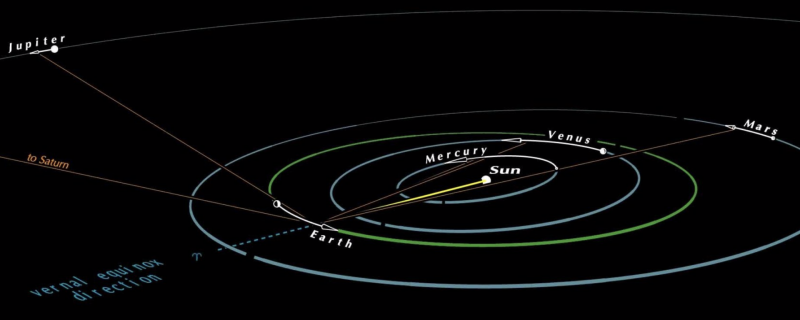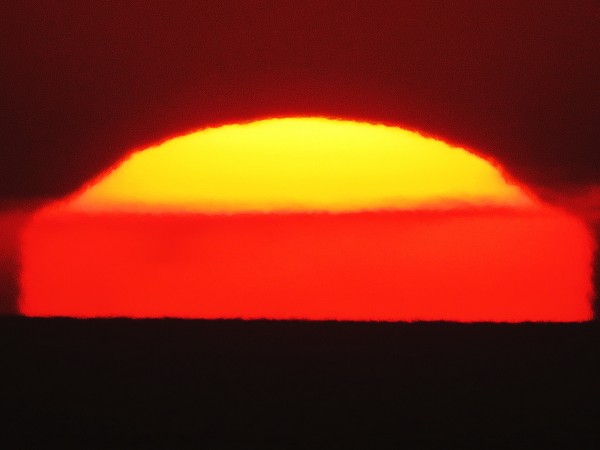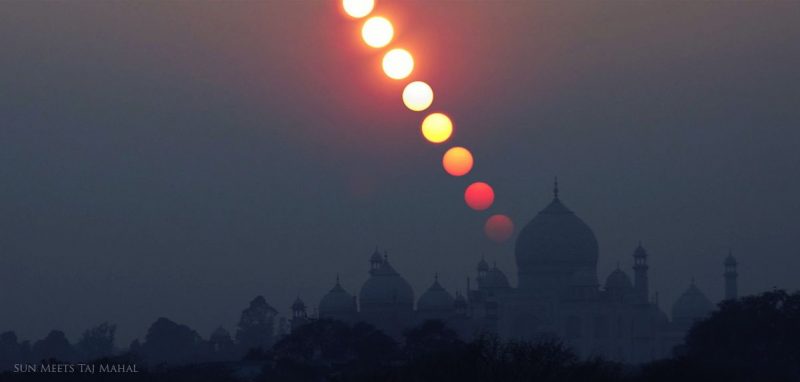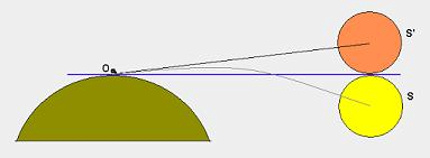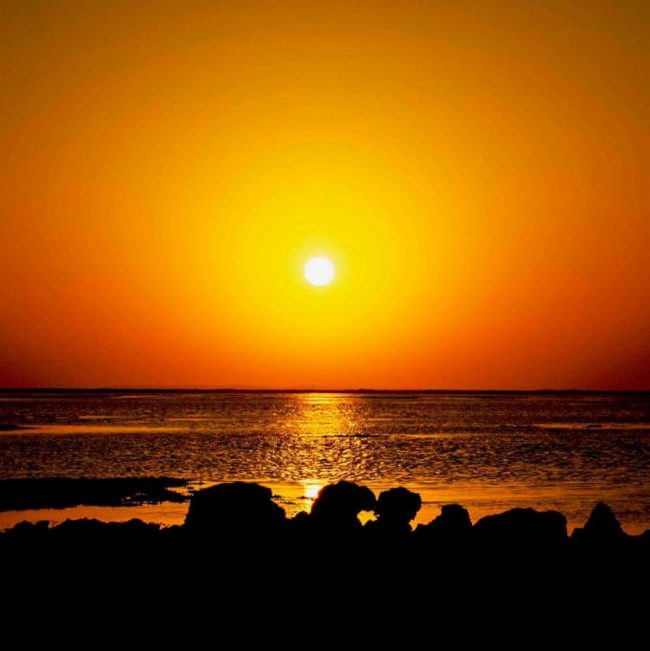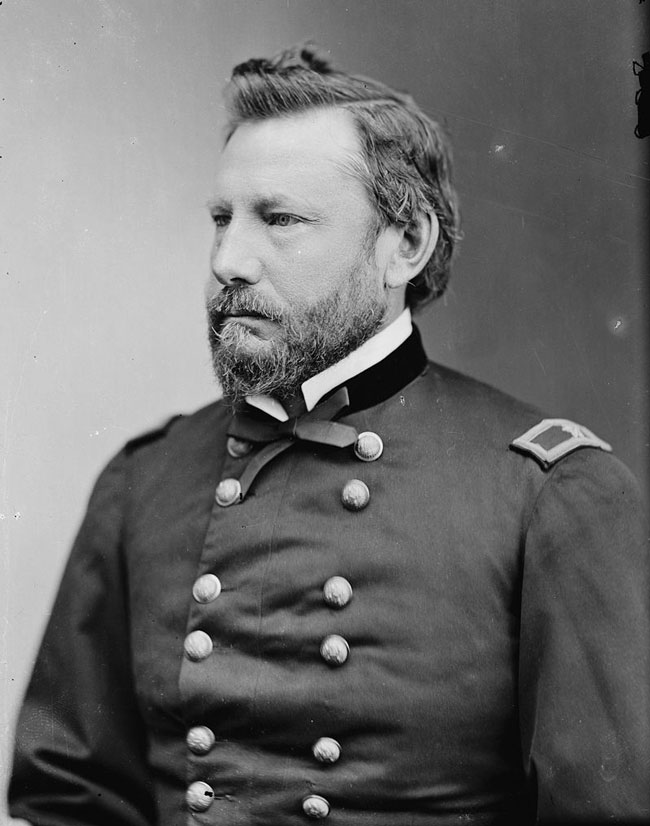Editor's Pick
‘Four million’ join students in climate marches, building pressure on leaders
Organisers said record numbers marched in countries around the world, sending a clear message to politicians meeting in New York
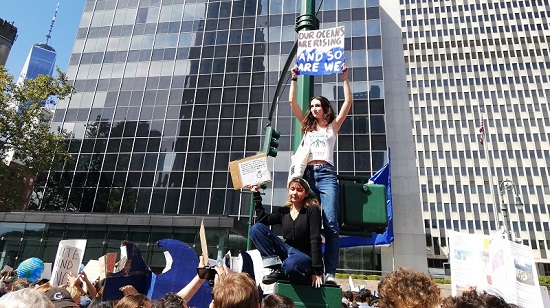
Hundreds of thousands of young people took to the streets in New York demanding governments do more to tackle the climate crisis (Photo: Chloé Farand)
More than four million people have taken part in an unprecedented wave of climate protests across the world, organisers said, in the most powerful message to governments yet to take serious action.
The global strike was billed as the largest climate protest in history days before world leaders gather in New York for a three-day climate action summit convened by UN secretary general António Guterres starting Saturday.
Hundreds of thousands of people, mostly young people, some accompanied by parents, gathered in Foley Square in front of the Thurgood Marshall courthouse in downtown Manhattan in September heat, waving colourful hand-painted placards.
“Cooler is cool”, “Remember when the earth was cool” and “The earth should not be hotter than me” read some of the signs, encapsulating a sense that climate action was now utterly mainstream.
The protest marched through the streets of New York to Battery Park, at the southern tip of Manhattan, to hear from Swedish activist Greta Thunberg. The social movement she inspired in such a short amount of time culminated in a powerful message to governments that to remain relevant to young voters, their actions need to change.
Organisers 350.org said protests around the world had mobilised more than four million people in 163 countries. That number could not be independently verified.
Amazing images flooded social media, those are shared below.
‘Four million’ join students in climate marches, building pressure on leaders by Chloé Farand & Jill Russo, Climate Home News, Sep 20, 2019
Click here to access the entire article as posted on the Climate Home News website.
Articles Linked to on Facebook
Sun Sep 15, 2019
- The best case for and against a fracking ban by Umair Irfan, Energy & Environment, Vox, Sep 13, 2019
- ‘In for a roasting’: Australia ‘on brink’ of ‘apocalyptic’ conditions by Jaime Seidel, news.com.au,, Sep 11, 2019
- 'Going to the streets again': what you need to know about Friday's climate strike by Lisa Cox, Environment, Guardian, Sep 14, 2019
- The world has a third pole – and it's melting quickly by Gaia Vince, Environment, Observer/Guardian, Sep 15, 2019
- Naomi Klein: 'We are seeing the beginnings of the era of climate barbarism, Interview by Natalie Hanman, Environment, Guardian, Sep 15, 2019
- Rising Emissions Overshadow Airlines’ Fuel-Efficiency Gains by Maxine Joselow, E&E News/Scientific American Sep 12, 2019
- How to live with the climate crisis without becoming a nihilist, Opinion by Peter Kalmus, Los Angeles Times, Sep 15, 2019
Mon Sep 16, 2019
- Deforestation Is Getting Worse, 5 Years After Countries and Companies Vowed to Stop It by Georgina Gustin, InsideClimate News, Sep 13, 2019
- The drought is now so severe it is biting in even the greenest corners of the country by Nadia Daly, ABC News (AU), Sep 15, 2019
- Climate change is already here. 2020 could be your last chance to stop an apocalypse (Part 1 of a three-part series on climate change) by Editorial Board, Los Angeles Times, Sep 15, 2019
- 'Trollbots' Swarm Twitter with Attacks on Climate Science Ahead of UN Summit by Marianne Lavelle, InsideClimate News, Sep 16, 2019
- Net zero: the story of the target that will shape our future by Megan Darby, Climate Home News, Sep 16, 2019
- Wealthy countries are responsible for climate change, but it’s the poor who will suffer most (Part 2 of a three-part series on climate change) by Editorial Board, Los Angeles Times, Sep 15, 2019
- Surviving climate change means an end to burning fossil fuels. Prepare yourself for sacrifices (Part 3 of a three- part series on climate change) by Editorial Board, Los Angeles Times, Sep 15, 2019
- Most American teens are frightened by climate change, poll finds, and about 1 in 4 are taking action by Sarah Kaplan & Emily Guskin, Science, Washington Post, Sep 16, 2019
Tue Sep 17, 2019
- Leak suggests UN agency self-censors on climate crisis after US pressure by Emanuel Stoakes, Global Development, Guardian, Sep 11, 2019
- The gloves are off: ‘predatory’ climate deniers are a threat to our children by Tim Flannery, The Conversation UK, Sep 17, 2019
- Not just Kavanaugh: Another alarming reason to fear the Supreme Court, Opinion by Greg Sargent, The Plum Line, Washington Post, Sep 16, 2019
- It was the hottest summer on record for the Northern Hemisphere by Doyle Rice, USA Today, Sep 16, 2019
- How a Revolution in Climate Science Is Putting Big Oil Back on Trial by Rebecca Leber, Mother Jones, Sep 16, 2019
- Money Is the Oxygen on Which the Fire of Global Warming Burns by Bill McKibben, Daily Comment, The New Yorker Magazine, Sep 17, 2019
- Greta Thunberg is leading kids and adults from 150 countries in a massive Friday climate strike by Umair Irfan, Vox, Sep 17, 2019
- The silenced: meet the climate whistleblowers muzzled by Trump by Oliver Milman, Covering Climate Now, Environment, Guardian, Sep 17, 2019
Wed Sep 18, 2019
- As the Monsoon and Climate Shift, India Faces Worsening Floods by Vaishnavi Chandrashekhar, Yale Environment 360, Sep 17, 2019
- 2050 is too late – we must drastically cut emissions much sooner by Tim Jackson, The Conversation UK, Sep 15, 2019
- Skeptical Science to join the Global Climate Strike on September 20! by BaerbelW, Skeptical Science, Sep 8, 2019
- TIMELINE-Greta Thunberg: From teen climate activist to leader of global movement by Bernadette Baum & Liam Gould, Reuters, Sep 18, 2019
- As Climate Crisis Worsens & Poverty Rises, UN Appears Off-Track on Development Agenda by Thalif Deen, Inter Press Service, Sep 18, 2019
- 5 charts show how your household drives up global greenhouse gas emissions by Ming Xu & Morteza Taiebat, The Conversation US, Sep 10, 2019
- Greta Thunberg Just Delivered Her Testimony to US Lawmakers: It Was a Landmark UN Climate Report by Jessica Corbett, Common Dreams, Sep 16, 2019
- Something strange is happening to Greenland's ice sheet by Madeleine Stowe, Environment, National Geographic, Sep 18, 2019
Thu Sep 19, 2019
- As Amazon Smolders, Indonesia Fires Choke the Other Side of the World by Richard C. Paddock and Muktita Suhartono, Asia Pacific, New York Times, Sep 17, 2019
- Faith institutions are largest group in global divestment movement by Ellen Teague, Independent Catholic News (ICN), Sep 17, 2019
- Scientists set out how to halve greenhouse gas emissions by 2030 by Fiona Harvey, Environment, Guardian, Sep 18, 2019
- How to Join the Global Youth Climate Strike by Amanda Arnold, The Cut, New York Magazine, Sep 19, 2019
- People in southeastern Texas are urgently warned to stay indoors as Imelda causes widespread flooding by Jason Hanna, Gianluca Mezzofiore & Madeline Holcombe, CNN, Sep 19, 2019
- It’s Greta’s World by David Wallace-Wells, Intelligencer, New York Magazine, Sep 18, 2019
- Trump plans to revoke a key California environmental power; state officials vow to fight by Anna M Phillips, Environment, Los Angeles Times, Sep 18, 2019
Fri Sep 20, 2019
- Washington to join California in fighting Trump administration’s attack on state vehicle-emission rules by Hal Benton, Environment, Seattle Times, Sep 18, 2019
- What we can still learn from the Lubavitcher Rebbe about climate change, Opinion by Philip Wexler, Jewish Telegraphic Agency, Sep 18, 2019
- Global climate strike sees 'hundreds of thousands' of Australians rally across the country, ABC News (AU), Sep 20, 2019
- Greta Thunberg: The teenage old soul of the climate crisis by Bill Weir, CNN, Sep 20, 2019
- 'Enough is enough’: biggest-ever climate protest sweeps UK by Matthew Taylor & Jonathan Watts, Environment, Guardian, Sep 20, 2019
- 'This is our future' say students, as climate protests sweep globe by Hans Lee, Philip Blenkinsop, Fabrizio Bensch & Ilze Filks, Reuters, Sep 20, 2019
- In Pictures and Video: What 'Biggest Day of Climate Action in Planetary History' Looks Like as Over 4 Million Strike Worldwide by Jake Johnson, Common Dreams, Sep 20, 2019
- Protesting Climate Change, Young People Take to Streets in a Global Strike by Somini Sengupta, Climate, New York Times, Sep 20, 2019
Sat Sep 21, 2019
- What is the UN climate action summit? by Chloé Farand, Politics, Climate Home News, Sep 16, 2019
- Greta Thunberg is a painful reminder of decades of climate failures by Dana Nuccitelli, Bulletin of the Atomic Scientists, Sep 19, 2019
- Katharine Hayhoe Named United Nations’ Champion of the Earth by AGU News, Sep 18, 2019
- ‘Four million’ join students in climate marches, building pressure on leaders by Chloé Farand & Jill Russo, Climate Home News, Sep 20, 2019
from Skeptical Science https://ift.tt/31GVZ8m
Editor's Pick
‘Four million’ join students in climate marches, building pressure on leaders
Organisers said record numbers marched in countries around the world, sending a clear message to politicians meeting in New York

Hundreds of thousands of young people took to the streets in New York demanding governments do more to tackle the climate crisis (Photo: Chloé Farand)
More than four million people have taken part in an unprecedented wave of climate protests across the world, organisers said, in the most powerful message to governments yet to take serious action.
The global strike was billed as the largest climate protest in history days before world leaders gather in New York for a three-day climate action summit convened by UN secretary general António Guterres starting Saturday.
Hundreds of thousands of people, mostly young people, some accompanied by parents, gathered in Foley Square in front of the Thurgood Marshall courthouse in downtown Manhattan in September heat, waving colourful hand-painted placards.
“Cooler is cool”, “Remember when the earth was cool” and “The earth should not be hotter than me” read some of the signs, encapsulating a sense that climate action was now utterly mainstream.
The protest marched through the streets of New York to Battery Park, at the southern tip of Manhattan, to hear from Swedish activist Greta Thunberg. The social movement she inspired in such a short amount of time culminated in a powerful message to governments that to remain relevant to young voters, their actions need to change.
Organisers 350.org said protests around the world had mobilised more than four million people in 163 countries. That number could not be independently verified.
Amazing images flooded social media, those are shared below.
‘Four million’ join students in climate marches, building pressure on leaders by Chloé Farand & Jill Russo, Climate Home News, Sep 20, 2019
Click here to access the entire article as posted on the Climate Home News website.
Articles Linked to on Facebook
Sun Sep 15, 2019
- The best case for and against a fracking ban by Umair Irfan, Energy & Environment, Vox, Sep 13, 2019
- ‘In for a roasting’: Australia ‘on brink’ of ‘apocalyptic’ conditions by Jaime Seidel, news.com.au,, Sep 11, 2019
- 'Going to the streets again': what you need to know about Friday's climate strike by Lisa Cox, Environment, Guardian, Sep 14, 2019
- The world has a third pole – and it's melting quickly by Gaia Vince, Environment, Observer/Guardian, Sep 15, 2019
- Naomi Klein: 'We are seeing the beginnings of the era of climate barbarism, Interview by Natalie Hanman, Environment, Guardian, Sep 15, 2019
- Rising Emissions Overshadow Airlines’ Fuel-Efficiency Gains by Maxine Joselow, E&E News/Scientific American Sep 12, 2019
- How to live with the climate crisis without becoming a nihilist, Opinion by Peter Kalmus, Los Angeles Times, Sep 15, 2019
Mon Sep 16, 2019
- Deforestation Is Getting Worse, 5 Years After Countries and Companies Vowed to Stop It by Georgina Gustin, InsideClimate News, Sep 13, 2019
- The drought is now so severe it is biting in even the greenest corners of the country by Nadia Daly, ABC News (AU), Sep 15, 2019
- Climate change is already here. 2020 could be your last chance to stop an apocalypse (Part 1 of a three-part series on climate change) by Editorial Board, Los Angeles Times, Sep 15, 2019
- 'Trollbots' Swarm Twitter with Attacks on Climate Science Ahead of UN Summit by Marianne Lavelle, InsideClimate News, Sep 16, 2019
- Net zero: the story of the target that will shape our future by Megan Darby, Climate Home News, Sep 16, 2019
- Wealthy countries are responsible for climate change, but it’s the poor who will suffer most (Part 2 of a three-part series on climate change) by Editorial Board, Los Angeles Times, Sep 15, 2019
- Surviving climate change means an end to burning fossil fuels. Prepare yourself for sacrifices (Part 3 of a three- part series on climate change) by Editorial Board, Los Angeles Times, Sep 15, 2019
- Most American teens are frightened by climate change, poll finds, and about 1 in 4 are taking action by Sarah Kaplan & Emily Guskin, Science, Washington Post, Sep 16, 2019
Tue Sep 17, 2019
- Leak suggests UN agency self-censors on climate crisis after US pressure by Emanuel Stoakes, Global Development, Guardian, Sep 11, 2019
- The gloves are off: ‘predatory’ climate deniers are a threat to our children by Tim Flannery, The Conversation UK, Sep 17, 2019
- Not just Kavanaugh: Another alarming reason to fear the Supreme Court, Opinion by Greg Sargent, The Plum Line, Washington Post, Sep 16, 2019
- It was the hottest summer on record for the Northern Hemisphere by Doyle Rice, USA Today, Sep 16, 2019
- How a Revolution in Climate Science Is Putting Big Oil Back on Trial by Rebecca Leber, Mother Jones, Sep 16, 2019
- Money Is the Oxygen on Which the Fire of Global Warming Burns by Bill McKibben, Daily Comment, The New Yorker Magazine, Sep 17, 2019
- Greta Thunberg is leading kids and adults from 150 countries in a massive Friday climate strike by Umair Irfan, Vox, Sep 17, 2019
- The silenced: meet the climate whistleblowers muzzled by Trump by Oliver Milman, Covering Climate Now, Environment, Guardian, Sep 17, 2019
Wed Sep 18, 2019
- As the Monsoon and Climate Shift, India Faces Worsening Floods by Vaishnavi Chandrashekhar, Yale Environment 360, Sep 17, 2019
- 2050 is too late – we must drastically cut emissions much sooner by Tim Jackson, The Conversation UK, Sep 15, 2019
- Skeptical Science to join the Global Climate Strike on September 20! by BaerbelW, Skeptical Science, Sep 8, 2019
- TIMELINE-Greta Thunberg: From teen climate activist to leader of global movement by Bernadette Baum & Liam Gould, Reuters, Sep 18, 2019
- As Climate Crisis Worsens & Poverty Rises, UN Appears Off-Track on Development Agenda by Thalif Deen, Inter Press Service, Sep 18, 2019
- 5 charts show how your household drives up global greenhouse gas emissions by Ming Xu & Morteza Taiebat, The Conversation US, Sep 10, 2019
- Greta Thunberg Just Delivered Her Testimony to US Lawmakers: It Was a Landmark UN Climate Report by Jessica Corbett, Common Dreams, Sep 16, 2019
- Something strange is happening to Greenland's ice sheet by Madeleine Stowe, Environment, National Geographic, Sep 18, 2019
Thu Sep 19, 2019
- As Amazon Smolders, Indonesia Fires Choke the Other Side of the World by Richard C. Paddock and Muktita Suhartono, Asia Pacific, New York Times, Sep 17, 2019
- Faith institutions are largest group in global divestment movement by Ellen Teague, Independent Catholic News (ICN), Sep 17, 2019
- Scientists set out how to halve greenhouse gas emissions by 2030 by Fiona Harvey, Environment, Guardian, Sep 18, 2019
- How to Join the Global Youth Climate Strike by Amanda Arnold, The Cut, New York Magazine, Sep 19, 2019
- People in southeastern Texas are urgently warned to stay indoors as Imelda causes widespread flooding by Jason Hanna, Gianluca Mezzofiore & Madeline Holcombe, CNN, Sep 19, 2019
- It’s Greta’s World by David Wallace-Wells, Intelligencer, New York Magazine, Sep 18, 2019
- Trump plans to revoke a key California environmental power; state officials vow to fight by Anna M Phillips, Environment, Los Angeles Times, Sep 18, 2019
Fri Sep 20, 2019
- Washington to join California in fighting Trump administration’s attack on state vehicle-emission rules by Hal Benton, Environment, Seattle Times, Sep 18, 2019
- What we can still learn from the Lubavitcher Rebbe about climate change, Opinion by Philip Wexler, Jewish Telegraphic Agency, Sep 18, 2019
- Global climate strike sees 'hundreds of thousands' of Australians rally across the country, ABC News (AU), Sep 20, 2019
- Greta Thunberg: The teenage old soul of the climate crisis by Bill Weir, CNN, Sep 20, 2019
- 'Enough is enough’: biggest-ever climate protest sweeps UK by Matthew Taylor & Jonathan Watts, Environment, Guardian, Sep 20, 2019
- 'This is our future' say students, as climate protests sweep globe by Hans Lee, Philip Blenkinsop, Fabrizio Bensch & Ilze Filks, Reuters, Sep 20, 2019
- In Pictures and Video: What 'Biggest Day of Climate Action in Planetary History' Looks Like as Over 4 Million Strike Worldwide by Jake Johnson, Common Dreams, Sep 20, 2019
- Protesting Climate Change, Young People Take to Streets in a Global Strike by Somini Sengupta, Climate, New York Times, Sep 20, 2019
Sat Sep 21, 2019
- What is the UN climate action summit? by Chloé Farand, Politics, Climate Home News, Sep 16, 2019
- Greta Thunberg is a painful reminder of decades of climate failures by Dana Nuccitelli, Bulletin of the Atomic Scientists, Sep 19, 2019
- Katharine Hayhoe Named United Nations’ Champion of the Earth by AGU News, Sep 18, 2019
- ‘Four million’ join students in climate marches, building pressure on leaders by Chloé Farand & Jill Russo, Climate Home News, Sep 20, 2019
from Skeptical Science https://ift.tt/31GVZ8m



